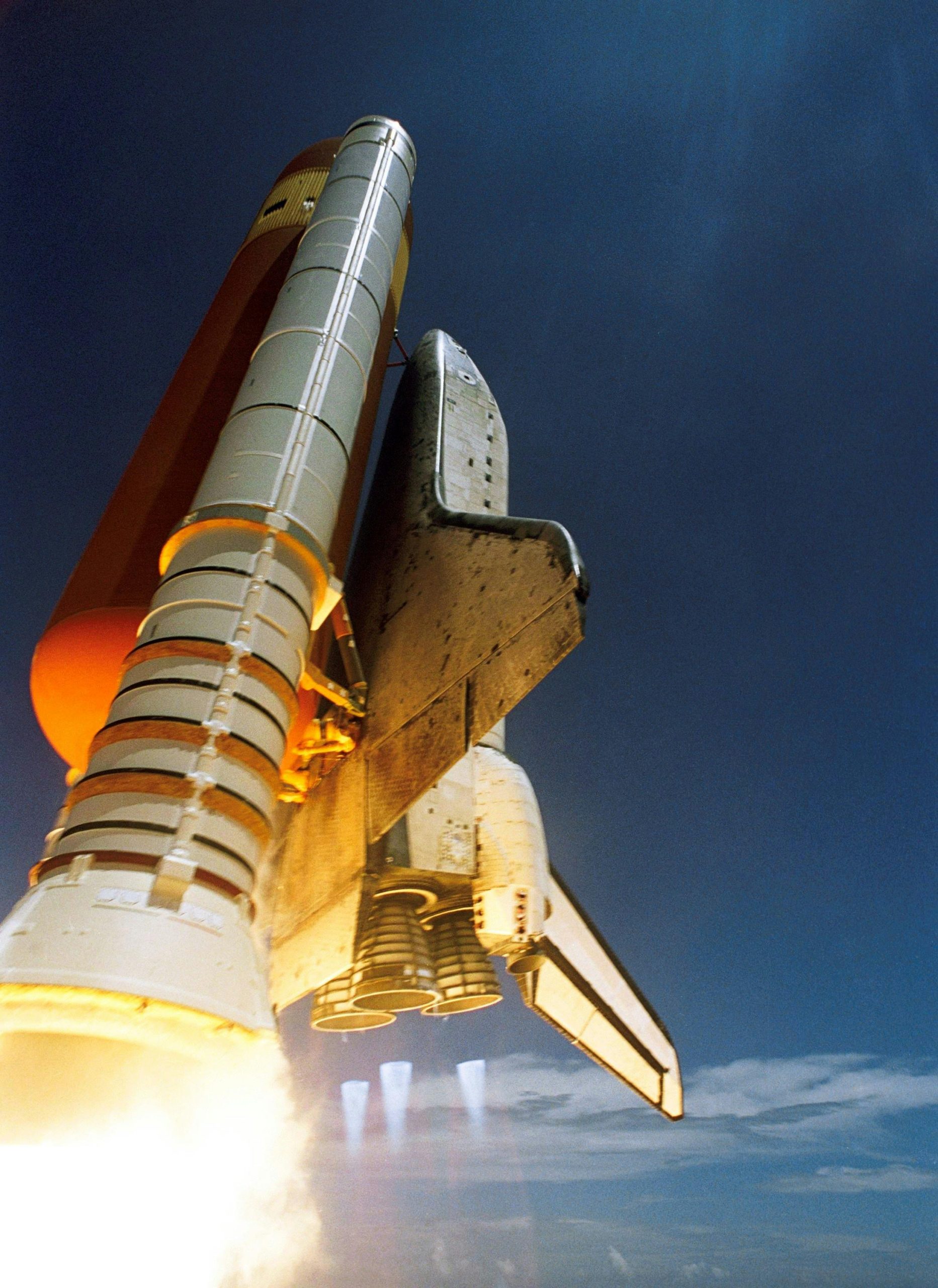Table of Contents
![]()
Introduction
Space travel technology encompasses the tools, techniques, and innovations that have enabled humanity to explore beyond Earth’s atmosphere. This field has profoundly impacted our understanding of the universe and has opened new frontiers for scientific discovery, commercial opportunities, and human exploration. This article traces the evolution of space travel technology from its early theoretical foundations to the cutting-edge advancements of the present and future.
Early Theories and Concepts
Ancient and Medieval Views on Space Travel
The idea of traveling to the stars has fascinated humans for millennia, though early visions were largely confined to mythology and philosophical speculation. Ancient civilizations like the Greeks and Romans explored cosmic themes in their myths, while early astronomers such as Claudius Ptolemy and Copernicus laid the groundwork for understanding the cosmos. However, the notion of physically traveling to space was not practically considered until much later.
Renaissance and Enlightenment Contributions
The Renaissance and Enlightenment periods marked significant advancements in scientific thinking. Johannes Kepler’s formulation of the laws of planetary motion and Isaac Newton’s laws of motion provided the foundational principles necessary for space travel. These theories described how celestial bodies move and interact, laying the groundwork for future rocket science. Visionaries like Cyrano de Bergerac and Jules Verne imagined space travel through fictional works, inspiring future generations of scientists and engineers.
Early 20th Century Developments
The Rocketry Pioneers
The 20th century saw the emergence of rocketry as a serious scientific endeavor. Konstantin Tsiolkovsky, a Russian scientist, developed the rocket equation, which describes how rockets can achieve the velocity necessary to reach space. In the United States, Robert H. Goddard built and successfully launched the first liquid-fueled rocket in 1926, demonstrating that rockets could be practical tools for space exploration.
The Role of World War II
World War II accelerated developments in rocket technology, particularly through the work of German engineer Wernher von Braun, who developed the V-2 rocket for the Nazis. After the war, von Braun and his team were brought to the United States under Operation Paperclip, significantly contributing to American rocket development and the eventual success of the Apollo moon missions.
The Space Race Era (1950s-1960s)
The Cold War Context
The Cold War era was marked by intense competition between the United States and the Soviet Union to achieve significant milestones in space exploration. The USSR’s launch of Sputnik 1 in 1957 was the first artificial satellite to orbit Earth, marking the beginning of space travel’s modern era. This achievement spurred the U.S. to accelerate its own space program, leading to the establishment of NASA in 1958 and the initiation of Project Mercury.
Key Milestones
The space race saw remarkable milestones, including Yuri Gagarin’s historic orbital flight in 1961, making him the first human to journey into outer space. This was followed by the Apollo program, which achieved its crowning moment with the Apollo 11 mission in 1969, landing Neil Armstrong and Buzz Aldrin on the Moon. These accomplishments demonstrated the feasibility of human space travel and showcased advancements in rocket technology and spacecraft design.
Technological Innovations
The period also witnessed significant technological innovations, including advancements in rocket engines, spacecraft design, and space suits. The development of multi-stage rockets, heat shields, and life support systems made longer and more complex missions possible, paving the way for future exploration.
The Shuttle Era and International Collaboration (1970s-2000s)
Development and Use of the Space Shuttle
The 1970s ushered in a new era with the development of the Space Shuttle program, aimed at reducing the cost of space access and enabling reusable spacecraft. The Space Shuttle, with its ability to carry astronauts and cargo to low Earth orbit, became a workhorse for NASA, conducting numerous missions that included satellite deployment, scientific experiments, and the assembly of the International Space Station (ISS).
The International Space Station (ISS)
The ISS represents one of the most significant achievements in international collaboration, involving space agencies from the United States (NASA), Europe (ESA), Russia (Roscosmos), Japan (JAXA), and Canada (CSA). The station has served as a microgravity laboratory, enabling extensive scientific research and fostering cooperation between countries in space exploration.
Space Probes and Rovers
The exploration of other planets and celestial bodies was advanced through the use of space probes and rovers. Missions such as the Voyager probes, which traveled beyond the solar system, and Mars rovers like Spirit, Opportunity, and Curiosity, provided invaluable data about our solar system and beyond, expanding our knowledge of planetary science and geology.
The Modern Era and Future Prospects (2000s-Present)
The Rise of Private Space Companies
The early 21st century has seen a dramatic shift with the rise of private space companies. SpaceX, founded by Elon Musk, has revolutionized space travel with its reusable rockets, dramatically reducing launch costs and increasing accessibility. Blue Origin, led by Jeff Bezos, has also contributed to advancements in space technology with its New Shepard suborbital vehicle and ongoing development of the New Glenn orbital rocket.
Advances in Space Travel Technology
Modern advancements include innovations in rocket design, such as SpaceX’s Falcon 9 and Falcon Heavy, which feature reusable first stages. Furthermore, research into advanced propulsion methods, including nuclear thermal and electric propulsion, aims to reduce travel time to distant destinations like Mars and beyond.
Prospects for Human Exploration Beyond Earth
The future of space exploration includes ambitious plans for human missions to Mars and the establishment of permanent lunar bases. Technologies under development, such as the Space Launch System (SLS) and NASA’s Artemis program, aim to return humans to the Moon and eventually establish a sustainable presence there. Additionally, advancements in artificial intelligence and robotics are expected to play crucial roles in future missions, enhancing our capabilities for exploration and research.
Challenges and Considerations
Technical Challenges
Despite the progress, space travel technology faces numerous challenges, including ensuring the safety and reliability of spacecraft. Developing robust life support systems and addressing the health impacts of long-duration spaceflight are critical for the success of future missions.
Ethical and Legal Issues
Space exploration raises important ethical and legal issues, such as the management of space debris and the environmental impact of human activities in space. International treaties, such as the Outer Space Treaty, provide a framework for the peaceful use of outer space, but ongoing dialogue and regulation are necessary to address new challenges.
Economic and Social Implications
The cost of space missions remains high, with funding coming from government agencies and private investors. The economic implications of space exploration include potential commercial opportunities and the broader impact on society, inspiring future generations and fostering innovation.
Conclusion
The development of space travel technology represents one of humanity’s greatest achievements, reflecting a blend of scientific ingenuity, international collaboration, and visionary ambition. From early theoretical concepts to modern advancements, each step has contributed to our ability to explore and understand the cosmos. As we look to the future, continued innovation and cooperation will be essential to overcoming challenges and realizing the full potential of space exploration.
Share This





Be the first to comment